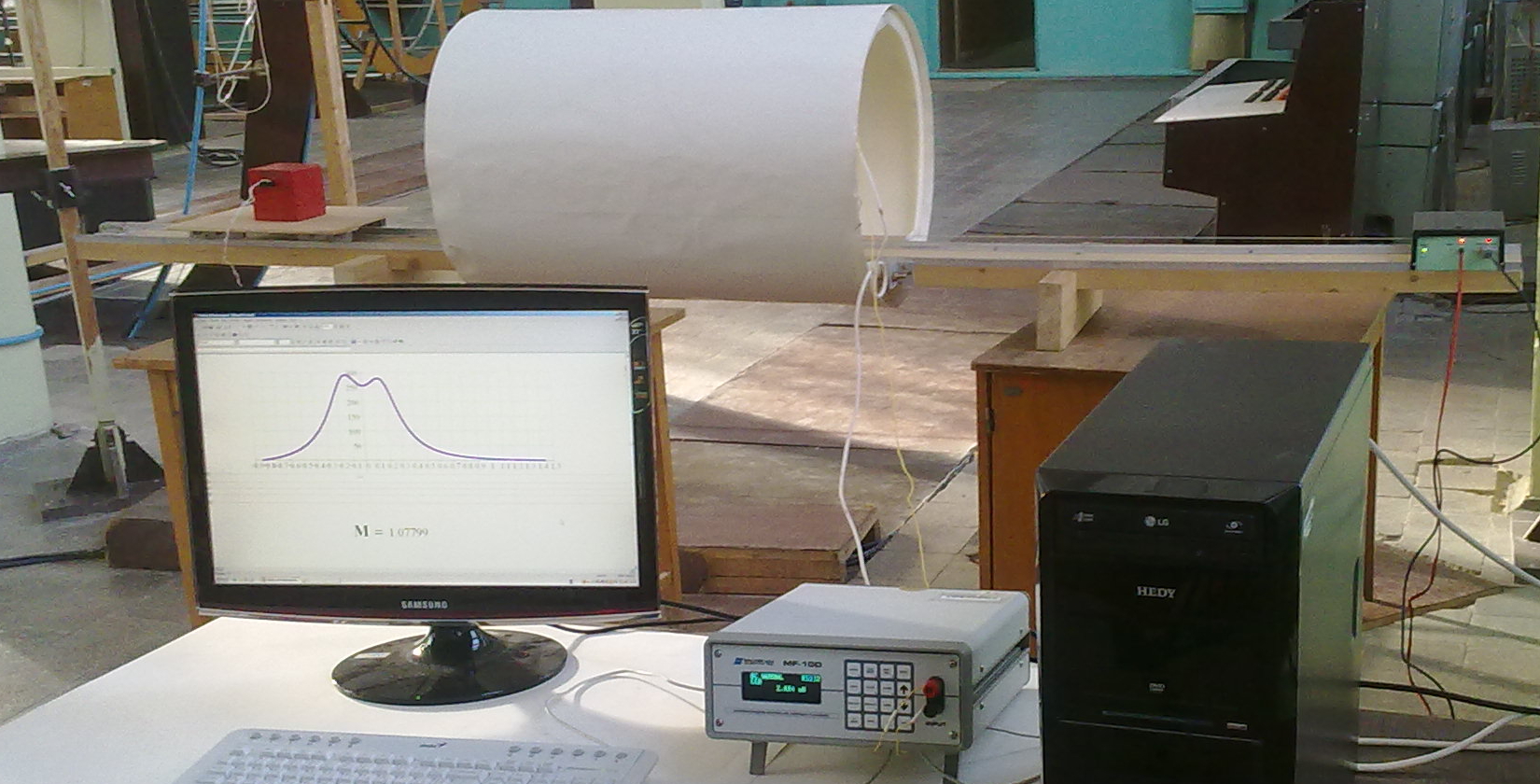Удосконалення технології забезпечення магнітної чистоти малих космічних апаратів
DOI:
https://doi.org/10.15587/1729-4061.2023.282444Ключові слова:
технологія забезпечення магнітної чистоти, космічний апарат, сферична гармоніка магнітного поляАнотація
Об’єктом дослідження є технологія забезпечення магнітної чистоти при її застосуванні до малих космічних апаратів (КА) з габаритними розмірами ~1 м в частині мінімізації впливу магнітної завади бортовому магнітометру. В рамках вирішення загальної проблеми підвищення надійності КА розглядається задача вдосконалення технології магнітної чистоти. Показано, що при розробці малих космічних апаратів, які мають підвищену щільність монтажу, застосування багато дипольної моделі для розрахунку магнітної завади ~50 нТл, є обмеженим. Теоретично обґрунтована доцільність використання замість багато дипольної моделі представлення магнітного поля комплектуючих супутника моделлю його сферичних гармонік. Запропоновано для практичного застосування моделі складання бюджету проекцій магнітної індукції завади бортовому магнітометру за даними експериментально визначених коефіцієнтів дипольної, квадрупольної та октупольної сферичних гармонік. Запропоновано алгоритм методики розрахунку координат розташування та проекцій магнітного моменту дипольного джерела всередині супутника на основі результатів вимірювання коефіцієнтів сферичних гармонік його комплектуючих. Теоретично обґрунтована можливість представлення коефіцієнтів сферичних гармонік магнітного поля всього супутника у вигляді суми перерахованих відповідних коефіцієнтів, отриманих при вимірюваннях поля комплектуючих. Запропоновано використовувати як критерій якості проведення робіт по забезпеченню магнітної чистоти різницю між розрахованими та виміряними значеннями відповідних коефіцієнтів. В разі використання в космічній галузі запропонованої методики може бути підвищена якість забезпечення магнітної чистоти малих космічних апаратів, тим самим підвищена надійність їх функціонування на орбіті
Посилання
- Eichhorn, W. L. (1972). Magnetic dipole moment determination by near-field analysis. Washington, D.C.: National Aeronautics and Space Administration. Available at: https://ntrs.nasa.gov/api/citations/19720020082/downloads/19720020082.pdf
- ECSS-E-HB-20-07A (2012). Space engineering: Electromagnetic compatibility hand-book. ESA-ESTEC. Noordwijk: Requirements & Standards Division, 228.
- ECSS-E-HB-20-07С (2012). Space engineering: Electromagnetic compatibility hand-book. ESA-ESTEC. Noordwijk: Requirements & Standards Division, 91.
- Weikert, S., Mehlem, K., Wiegand, A. (2012). Spacecraft magnetic cleanliness prediction and control. ESA Workshop on Aerospace EMC. Available at: https://www.researchgate.net/publication/241633435_Spacecraft_magnetic_cleanliness_prediction_and_control
- Mehlem, K. (2012). Optimal Magnetic Cleanliness Modeling of Spacecraft. Modeling and Optimization in Space Engineering, 295–341. doi: https://doi.org/10.1007/978-1-4614-4469-5_13
- Narvaez, P. S. (2018). DC Magnetic Cleanliness Description for Spaceflight Programs. Handbook of Aerospace Electromagnetic Compatibility, 621–672. doi: https://doi.org/10.1002/9781119082880.ch12
- Connerney, J. E. P., Benn, M., Bjarno, J. B., Denver, T., Espley, J., Jorgensen, J. L. et al. (2017). The Juno Magnetic Field Investigation. Space Science Reviews, 213 (1-4), 39–138. doi: https://doi.org/10.1007/s11214-017-0334-z
- Pudney, M. (2014). Advances in Spacecraft Magnetic Cleanliness Verification and Magnetometer Zero Offset Determination in anticipation of the Solar Orbiter Mission. London.
- de Soria-Santacruz, M., Soriano, M., Quintero, O., Wong, F., Hart, S., Kokorowski, M. et al. (2020). An Approach to Magnetic Cleanliness for the Psyche Mission. 2020 IEEE Aerospace Conference. doi: https://doi.org/10.1109/aero47225.2020.9172801
- Jéger, C. (2017). Determination and Compensation Of Magnetic Dipole Moment in Application for a Scientific Nanosatellite Mission. Stockholm.
- Chen, X., Liu, S., Sheng, T., Zhao, Y., Yao, W. (2019). The satellite layout optimization design approach for minimizing the residual magnetic flux density of micro- and nano-satellites. Acta Astronautica, 163, 299–306. doi: https://doi.org/10.1016/j.actaastro.2018.12.006
- Mentges, A., Rawal, B. S. (2022). Magnetic Dipole Moment Estimation from Nearfield Measurements Using Stochastic Gradient Descent AI Model. 2022 International Conference on Machine Learning, Big Data, Cloud and Parallel Computing (COM-IT-CON). doi: https://doi.org/10.1109/com-it-con54601.2022.9850855
- Kildishev, A. V., Volokhov, S. A., Saltykov, J. D. (1997). Measurement of the spacecraft main magnetic parameters. 1997 IEEE Autotestcon Proceedings AUTOTESTCON ’97. IEEE Systems Readiness Technology Conference. Systems Readiness Supporting Global Needs and Awareness in the 21st Century. doi: https://doi.org/10.1109/autest.1997.643993
- Get'man, A. V. (2010). Spatial harmonic analysis of the magnetic field sensor of the neutral component of plasma. Eastern-European Journal of Enterprise Technologies, 6 (5 (48)), 35–38. Available at: http://journals.uran.ua/eejet/article/view/3326
- Vanderlinde, J. (2005). Classical Electromagnetic Theory. Springer. doi: https://doi.org/10.1007/1-4020-2700-1
- Smythe, W. (1989). Static and Dynamic Electricity. Hemisphere Publishing Corporation, 623.
- Getman, A. V. (2013). Spatial harmonic analysis of a magnetic field of a sensor plasma of spacecraft. Technical Electrodynamics, 6, 20–23. Available at: http://dspace.nbuv.gov.ua/xmlui/handle/123456789/100751

##submission.downloads##
Опубліковано
Як цитувати
Номер
Розділ
Ліцензія
Авторське право (c) 2023 Andriy Getman

Ця робота ліцензується відповідно до Creative Commons Attribution 4.0 International License.
Закріплення та умови передачі авторських прав (ідентифікація авторства) здійснюється у Ліцензійному договорі. Зокрема, автори залишають за собою право на авторство свого рукопису та передають журналу право першої публікації цієї роботи на умовах ліцензії Creative Commons CC BY. При цьому вони мають право укладати самостійно додаткові угоди, що стосуються неексклюзивного поширення роботи у тому вигляді, в якому вона була опублікована цим журналом, але за умови збереження посилання на першу публікацію статті в цьому журналі.
Ліцензійний договір – це документ, в якому автор гарантує, що володіє усіма авторськими правами на твір (рукопис, статтю, тощо).
Автори, підписуючи Ліцензійний договір з ПП «ТЕХНОЛОГІЧНИЙ ЦЕНТР», мають усі права на подальше використання свого твору за умови посилання на наше видання, в якому твір опублікований. Відповідно до умов Ліцензійного договору, Видавець ПП «ТЕХНОЛОГІЧНИЙ ЦЕНТР» не забирає ваші авторські права та отримує від авторів дозвіл на використання та розповсюдження публікації через світові наукові ресурси (власні електронні ресурси, наукометричні бази даних, репозитарії, бібліотеки тощо).
За відсутності підписаного Ліцензійного договору або за відсутністю вказаних в цьому договорі ідентифікаторів, що дають змогу ідентифікувати особу автора, редакція не має права працювати з рукописом.
Важливо пам’ятати, що існує і інший тип угоди між авторами та видавцями – коли авторські права передаються від авторів до видавця. В такому разі автори втрачають права власності на свій твір та не можуть його використовувати в будь-який спосіб.










